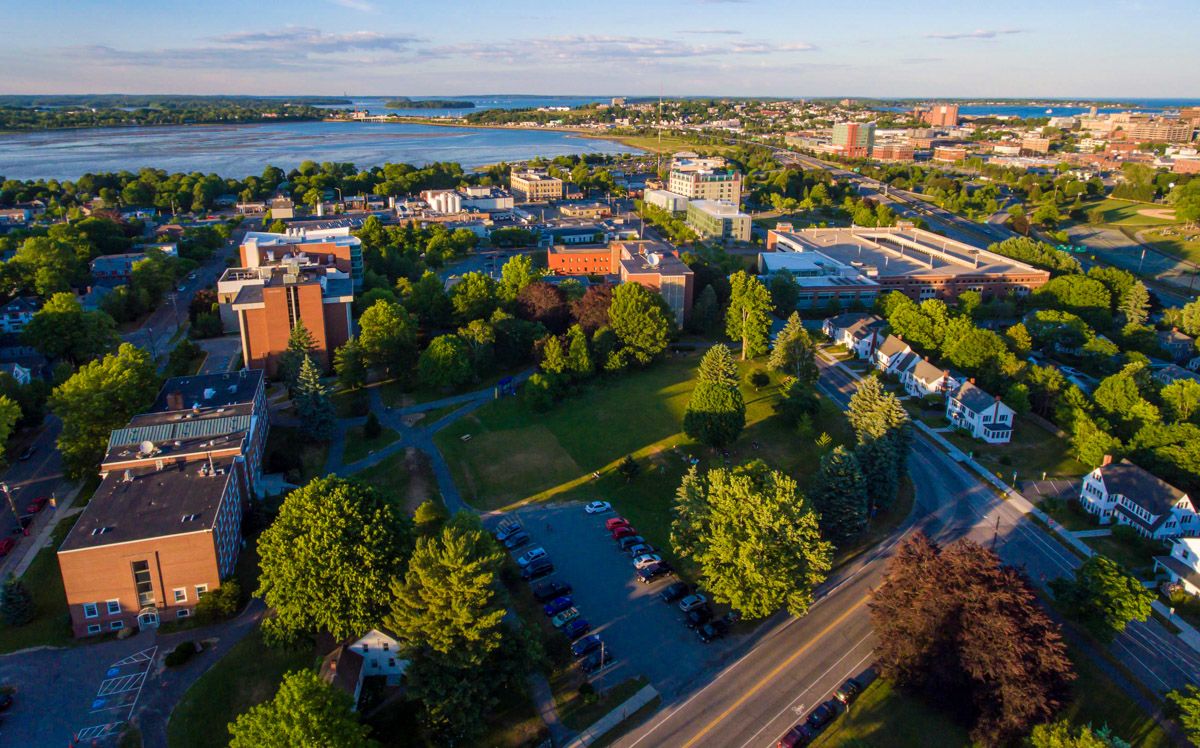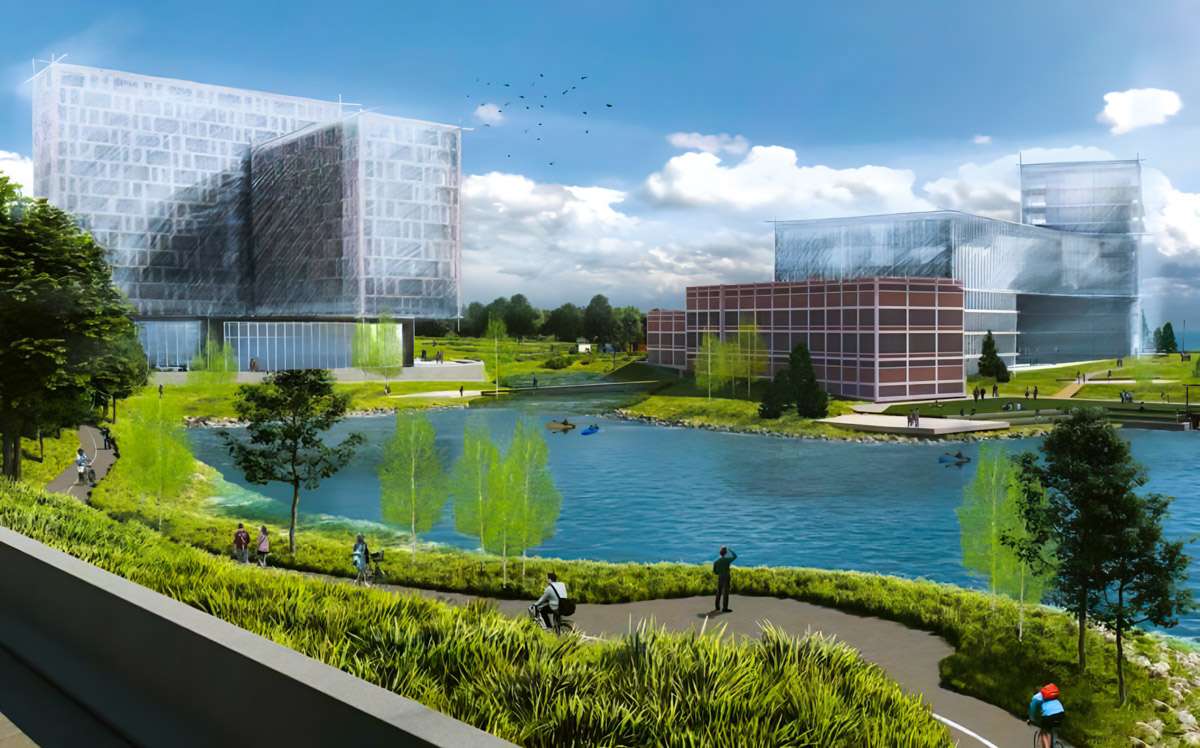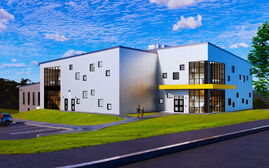
Adding dorms and degrees, Portland may soon become a college town
 File Photo / Courtesy of USM
A new exhibition is set to open on Nov. 17 at the USM Osher Map Library and Smith Center for Cartographic Education.
File Photo / Courtesy of USM
A new exhibition is set to open on Nov. 17 at the USM Osher Map Library and Smith Center for Cartographic Education.
Sure, Boston is known as a "college town," but Portland may soon have the same bragging rights.
With campuses of the University of Southern Maine, the University of New England, the Maine College of Art & Design and Northeastern University’s Roux Institute, Portland could eventually be home to 15,000 students.
That’s more than 22% of the city’s population, a concentration on par with Boston's.
Portland’s roots as a college town date back to 1831 when Westbrook Seminary opened on what is now UNE’s Portland campus. USM followed in 1878. Meanwhile, Maine College of Art & Design was founded a few years later in 1882 as part of the Portland Society of Art.
Fast forward to today as the Roux Institute at Northeastern University develops an incubation hub to train workers in Maine and draw talent from around the world to work in areas such as artificial intelligence, life sciences and medical research. The hub will have 4,500 students at the Portland-based institute within 20 years.

“There are so many wonderful things about Portland. The last thing Portland should do is become Boston. It would lose what makes Portland so appealing. Portland’s already cool,” says James Herbert, president of the University of New England, which has campuses in Portland and Biddeford. “We are and have been a college town.”
“At a time when most of our peers are shrinking in higher education, we’re welcoming the largest incoming class in UNE history in the fall,” Herbert says.
“With so many students in and around Portland, we are a busy, vibrant college town,” says Portland Mayor Kate Snyder. “It’s exciting to see.”
“The Roux Institute brings something unique. The incubation model will really attract people to Maine. It’s exciting. Having these educational institutions growing and attracting students will help us develop our future workforce,” Snyder says.
The University of Southern Maine has made a conscious effort to emphasize its Portland connection in recent years in a move to attract more students to the city that consistently rates high among top rankings for livability, top restaurants, quality of life and recreation.
“USM really started taking the huge asset that is Portland and making the school and campus more about Portland,” says Glenn Cummings, who stepped down recently as president of the University of Southern Maine. “It’s a cultural change for the University of Southern Maine and we’ve gotten an overwhelmingly positive response.”
“Portland has all the things a college student wants: the food, the microbreweries, entertainment, the waterfront, etc. It’s safe and livable, which parents like to see and students themselves like to see,” Cummings says.
“Portland is considered the 8th best place to live in the country, according to U.S. News and location is among the top five reasons for where you go to school. That’s why we invested in our Portland Commons Residence Hall. We want to attract those students looking for a place to call home in Portland,” Cummings says.
The housing challenge
The Portland Commons Residence Hall, the first university residence hall on USM’s Portland campus, is expected to be completed by mid-2023.
The 580-bed Portland Commons is a roughly $100 million project that the university hopes will help attract and retain students and offer affordable housing at a time of a housing crisis. The university is also building a 42,000-square foot Career & Student Success Center and creating a one-acre campus quad.
“The biggest barrier to attracting students to Portland is housing. If students are going to continue to thrive and stay in Portland, we need housing,” Cummings says.
Herbert agrees. “Portland already has a vibrant restaurant scene. It’s got that in abundance. It’s got the cultural and dining boxes checked. And the recreational aspect. Portland is unique. If you want an urban vibe, you can get that there. But there’s also awesome recreation that’s 10 minutes away and you’re in the sticks and surrounded by nature,” Herbert says.
“What Portland needs is more, and more easily accessible housing. If we want to attract more students from away, we need to address housing and rethink the good-intentioned policies that have actually dampened development,” Herbert says.
Developers have cited the Green New Deal and rent control as well-meaning but poorly executed policies passed by voters. The Green New Deal, passed by voters in 2020, tightened requirements on affordable housing in residential developments, making it more costly for developers to construct homes. In the year following the passage of the referendum, residential development dropped by 81.6%, according to a study by the Boulos Co.
“The challenge is housing. Students and affordable housing go hand-in-hand,” says Synder. “Transportation as Portland grows will become more pressing. We really need a regional solution to solve a myriad of issues.”

Going forward
“Portland should not try to become Boston. Portland should be a better version of itself. UNE’s not trying to become Tufts or Harvard,” Herbert says. “Colleges have to figure out their mission, identity and niche. They can’t go trying to be ‘Generic College.’”
“We all need to think about this — UNE, Roux, USM — how to attract and retain students and young professionals,” he says.
UNE is moving its medical school from Biddeford to Portland, to coexist in a new $93 million home along with pharmacy, dentistry, nursing and allied health professions. The move will allow UNE to grow the size of the medical school and train the young professionals together.
“In Boston, Tufts, Harvard, BU all have dental and medical all spread out. Not on one footprint. We’re creating a health sciences campus unique to New England,” Herbert says. “It’s an interprofessional education that requires everyone to be co-located.”
“Being in Portland for the professional students and graduate students is important to them. They like being in Portland. They like the vibe, the urban vibe, that Portland offers,” Herbert says.
Portland needs to do more to become known as a college town.
“For a place like Maine that needs to attract youth, Portland should absolutely market itself as a college town,” Cummings says.
He says one regret of his tenure at USM was his unsuccessful effort to change the name of the school to the University of Maine at Portland.
“The difference among guidance counselors and students at hearings ‘University of Maine at Portland’ versus ‘University of Southern Maine’ was dramatically different. There’s overwhelming support for putting Portland in the name, but the politics of it in Maine were a little grim,” Cummings says.
The idea of a rebranding had won endorsement from the school’s alumni association and the student government, in addition to the system trustees.
But since USM is a public university, the change also required approval of the state Legislature and drew criticism from some graduates and three legislators from the Portland suburb of Windham. USM scratched the idea in 2019.
“Portland is at an inflection point,” says Chris Mallett, chief administrative officer of the Roux Institute. “The global cities that are leading at the moment have an investment in innovation. Portland is poised to become a leader and attract students and talent from all over the world.”















0 Comments